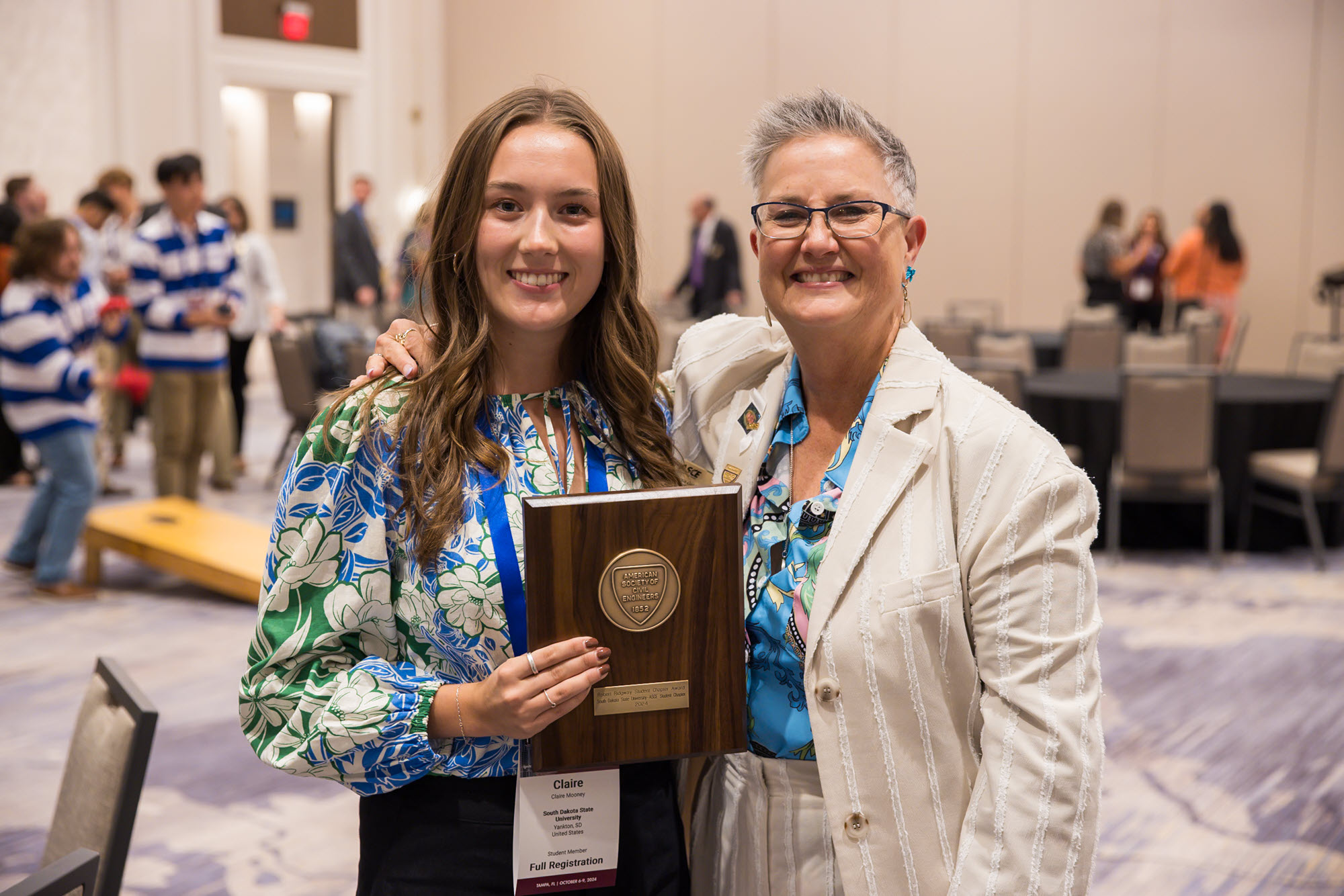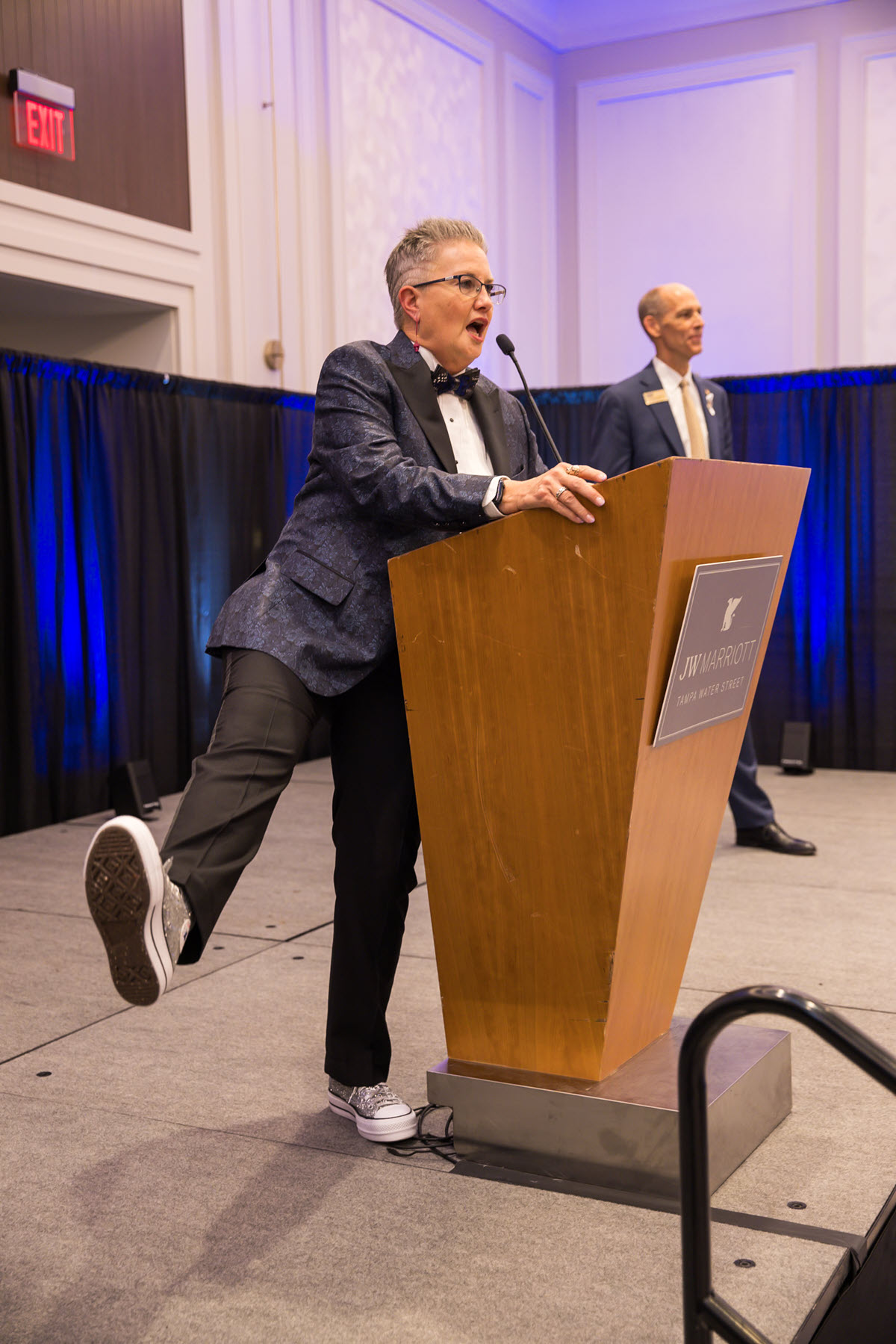 Jason Dixson Photography
Jason Dixson Photography It may seem like it was just yesterday that Marsia Geldert-Murphey donned her green Chuck Taylors and walked across the convention stage in Chicago to accept the role of 2024 ASCE president.
But civil engineering moves quickly, and Geldert-Murphey’s presidential year is already in the rearview. She traveled the world, tirelessly meeting with ASCE members of all ages, making connections, and inspiring with her seemingly boundless energy.
And in today’s Civil Engineering Source Exit Interview, she reflects on her term as Society president and the industry’s workforce challenges ahead.
Civil Engineering Source: You’ve been building toward the presidency for a long time with ASCE. Now that you’ve handed off the gavel to Feniosky Peña-Mora, how does it feel?
Marsia Geldert-Murphey: You know, it's bittersweet.
It’s good in that the time is right, and we now have new leadership constantly coming in with fresh ideas and fresh energy. And so that’s a good thing.
It’s sad in that I’m not sure if I gave everything I could give. Is there more I could have done?
But the reality is that just because you’re not sitting in that seat as president, there is still a lot that you can contribute and do. So I made that extremely clear to Feniosky: Hey, keep me in mind! I want to stay connected. I want to still participate in guiding ASCE as best I can.
Source: When you look at your presidential year, what springs to mind first?
Geldert-Murphey: It’s interesting. I have been an ASCE member since I was in college when I joined the South Dakota State University Jackrabbit Student Chapter. And really it was the catalyst that helped me. Not only did ASCE propel my ability to succeed in this industry, but it also was my network and my support system. I needed that because, remember, I was a first-generation college student.
So, I know I still am, like, overly enthusiastic about ASCE, I think, compared to probably the average bear. [laughs] But what I loved and what was a highlight for me as president was going around and seeing other people who are like me: other passionate ASCE members who are in leadership roles all around the world. And they too see the benefit that being a member of ASCE brings to them to not only enhance their personal journeys but to get that community support.
We’re lifting everybody up through the things that we do as an organization.
And as someone who started out from less privileged circumstances, I don’t think people understand how important this is to those of us who really needed that boost or needed that lift. With the workforce issues we’re having now and our need to attract more students into civil engineering, I’m looking to people like me.
We need more women. Women comprise 50% of the population, yet we’re still less than 20% of civil engineering. And I want people from similar circumstances to me – or even more challenging circumstances – to know that this is a profession you can grow into. You can be successful. And if you’re a part of ASCE, you have a family and a network that will support you every step of the way.
Seeing that network grow in my lived experience as ASCE president is so gratifying. It just makes me want to get even more involved and more engaged to help expand our reach to all the people who really need us.
 Jason Dixson Photography
Jason Dixson Photography Source: It’s such a cool thing the way you’ve carved your own path. What are some of those things ASCE did during your presidential year – or still needs to do – to help that kid, who is 12 years old right now and will someday soon be a first-generation college student, find ASCE?
Geldert-Murphey: One of the things I am very, very proud of is the premiere of Cities of the Future and getting to spread that message in this movie, hoping to reach people who don’t even know what a civil engineer is. So, I’m very excited about the possibilities and potential of bringing this to communities who would otherwise not even know this exists.
I’m also very proud that I got the OK from the ASCE Board of Direction to start a task committee looking at how we build our workforce. And part of that is how we attract young people into this profession, starting in elementary school.
Their charge was to start with a clean slate, so it’s a blue-sky initiative. If you could start from scratch now and rebuild our education system and our K through 12 outreach, what would that look like?
And I’m really excited because we’ve got some of the greatest minds in our profession from all walks of life and all different types of expertise working together to drive this.
I really think that will leave a lasting legacy not only for ASCE but for our world, because the more people we attract to this profession, the more we’re going to increase the health, safety, and welfare of all our communities.
You see a lot of young people who want to make the world a better place. And I always tell them, “If you want to make the world a better place, the best profession you can do that in is as a civil engineer.”



